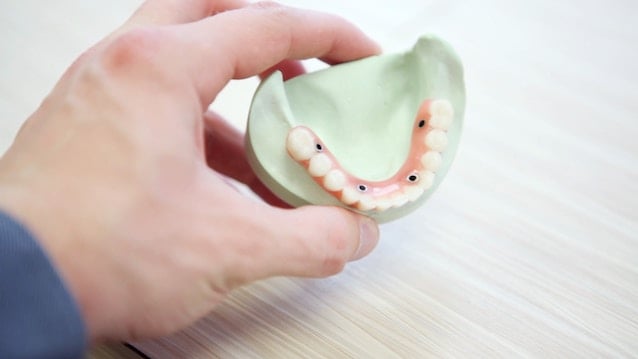
When it comes to teeth, most of us think of them as necessary for eating and presenting a bright smile to the world. In reality, your teeth, tongue, and even jaw structure play an important role in your speech as well. In fact, they work together to create various sounds and words, specifically the F, V, S, Z, and T sounds in words such as found, virtue, sew, zip, and time.
Your teeth, tongue and jaw are also integral in making the “sh” and “th” sounds. It’s true that good dental health helps to prevent cavities, but when left unmanaged, dental issues can diminish not only your smile, but also your ability to communicate. Let’s take a look at some of the most common ailments contributing to speech problems.
Missing Teeth
Sometimes one or more teeth is lost due to trauma or decay. In some cases, the adult tooth never fully developed on its own, leaving behind a space. The structure of your teeth and jaw impact the quality of your speech, so when one or more is missing, it prevents you from being able to create sounds fully, resulting in a speech impediment.
Since speech is learned at an early age, it’s important to keep an eye (and ear) out for children as they lose their baby teeth. Waiting for the Tooth Fairy may be a rite of passage, but the gap also opens the window to learning poor speech habits while the adult tooth fully forms. Space maintainers can help keep the gap open while the adult tooth comes in, while delivering a tooth-like structure to assist with speech.
Adults with missing teeth may benefit from partial dentures, which can be removed for cleaning, or even dental implants and bridges to help fill gaps.
Misaligned Teeth or Jaw
Clear articulation requires the tongue to touch or press against the teeth to create specific sounds. If patients have gaps, holes, or even overlapping or crowded teeth, it changes where the tongue is placed and can even lead to a lisp, whistle sound, or mispronunciation of words. Other causes of misalignment include:
- Thumbsucking
- Tongue thrusting
- Underbites
- Overbites
"The structure of your teeth and jaw impact the quality of your speech, so when one or more is missing, it prevents you from being able to create sounds fully, resulting in a speech impediment."
Dental professionals can help get teeth back in alignment, and braces — which adjust teeth through pressure — are one of the best known correctional options. Braces have come a long way and there are now color options beyond traditional metal varieties. For patients who prefer a more modest smile during treatment, braces can also be applied to the back of the teeth while delivering the same results. Invisalign is another alternative to traditional braces and offers a near-invisible solution to correct bites and spacing issues.
Tooth Appearance
People can become self-conscious about the appearance of their teeth. Discoloration, noticeable silver fillings, or even teeth that are larger or smaller than usual can leave someone feeling uncomfortable. In those cases, people often compensate by not smiling or hindering speech by putting a hand in front of their mouth or not opening wide enough to fully articulate their words.
The good news is there are several ways to resolve aesthetic concerns, all of which can be implemented by a dentist:
- Teeth whitening: Coffee, soda, and other acidic foods and drinks can wreak havoc on your enamel — staining and even wearing it away. Current options extend far beyond whitening toothpaste and include over-the-counter strips as well as stronger solutions your dentist can provide, including custom options like at-home trays and in-office treatments.
- Veneers: In some cases, a dentist will recommend veneers to correct issues like excessive wear, chipping or cracking, discoloration from things like medication or other procedures, as well as uneven or irregular shapes. Dental veneers, sometimes called porcelain veneers, are custom-made shells that are bonded to the problem tooth. Veneers are made in a lab outside of the dentist’s office and the color is tailored to match surrounding teeth, making for a unified appearance.
- Bonding: Unlike veneers, bonding doesn’t require customization, so it can be done in a single visit. If a tooth needs to be repaired due to decay, chipping, or fracture, the dentist will use tooth-colored composite resin (plastic) to fill in the area and then shape and polish it to match surrounding teeth.
The foundation for good dental health is to brush and floss daily, and to see your dentist every six months for a check-up and cleaning. Looking to remove the financial stress from proactive dental care? Check out dental saving options to find the one that works best for you or your family.
